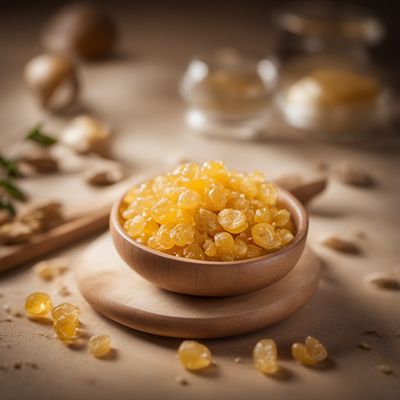
Ingredient
Whiting
The Delicate White Fish
Whiting is a delicate white fish with a mild flavor and tender texture. It has a slightly sweet and nutty taste, making it a versatile ingredient in various seafood dishes. The flesh of whiting is tender and flakes easily when cooked, making it suitable for grilling, baking, frying, or steaming. Its appearance is characterized by a pearly white color and a slender, elongated shape. Whiting is a popular choice for those who prefer milder fish flavors or are looking for a budget-friendly option.
Origins and history
Whiting is commonly found in the coastal waters of the Atlantic Ocean, particularly in North America and Europe. It is a popular fish among recreational anglers and commercial fishermen due to its abundance and accessibility. Historically, whiting was an important food source for coastal communities and was often used as a substitute for more expensive fish varieties. Today, it remains a popular choice for fish and chips in the United Kingdom and is enjoyed in various seafood dishes around the world.
Nutritional information
Whiting is a low-calorie fish that is a good source of protein and essential nutrients such as omega-3 fatty acids, selenium, and vitamin B12. A 100-gram serving of whiting provides approximately 90 calories, 20 grams of protein, and minimal fat content. It is also low in mercury, making it a safe choice for regular consumption.
Allergens
Some individuals may be allergic to fish, including whiting. It is important to be cautious and consult a healthcare professional if you experience any adverse reactions after consuming fish.
How to select
When selecting fresh whiting, look for fish with clear, bright eyes, shiny skin, and a mild oceanic smell. The flesh should be firm and spring back when pressed. Avoid fish with dull eyes, discolored skin, or a strong fishy odor. If purchasing frozen whiting, ensure that the packaging is intact and the fish is properly frozen without any signs of freezer burn.
Storage recommendations
To maintain the freshness and quality of whiting, it is best to store it in the refrigerator. Wrap the fish in plastic wrap or place it in an airtight container to prevent moisture loss and absorption of odors. Fresh whiting should be consumed within 1-2 days of purchase, while frozen whiting can be stored for up to 3-4 months in the freezer.
How to produce
Whiting is primarily caught by commercial fishermen using trawling or gillnetting methods. It is not commonly cultivated or farmed, as it is predominantly a wild-caught fish. However, individuals with access to suitable fishing areas can try their hand at catching whiting using fishing rods or nets. Local fishing regulations and licenses should be followed when engaging in recreational fishing activities.
Preparation tips
Whiting can be prepared in various ways, including grilling, baking, frying, or steaming. It can be seasoned with herbs, spices, or a simple marinade to enhance its flavor. When grilling or baking, it is recommended to leave the skin on to help retain moisture. Whiting fillets are also commonly used in fish tacos, fish stews, or as a filling for fish sandwiches. The delicate flavor of whiting pairs well with citrus, garlic, and fresh herbs like dill or parsley.
Culinary uses
Whiting is commonly used in fish and chips, a classic British dish. It is also popular in seafood soups, stews, and curries. Whiting fillets can be breaded and fried for a crispy fish option or used in tacos, salads, or sandwiches. Its mild flavor makes it a versatile fish that can be paired with various sauces, herbs, or spices.
Availability
Whiting is commonly available in North America and Europe, particularly in coastal regions. It can be found in seafood markets, fishmongers, and supermarkets that offer fresh or frozen seafood. The availability may vary depending on the local fishing season and demand.
More ingredients from this category

Hakes
The Versatile Hake

Pollack, pollock
Versatile White Fish

Alaska pollock
The Versatile Delight: Alaska Pollock

Cod
The Versatile Delight

Blue whitings
The Ocean's Silver Delight

Haddock
The Versatile White Fish

Tusk
"The Ivory of the Sea: Exploring the Delicate Flavor of Tusk"

Norway pout
The Silvery Delight: Exploring the Culinary Wonders of Norway Pout

Ling
The Delicate Delight

Grenadiers
Exquisite Ocean Gems